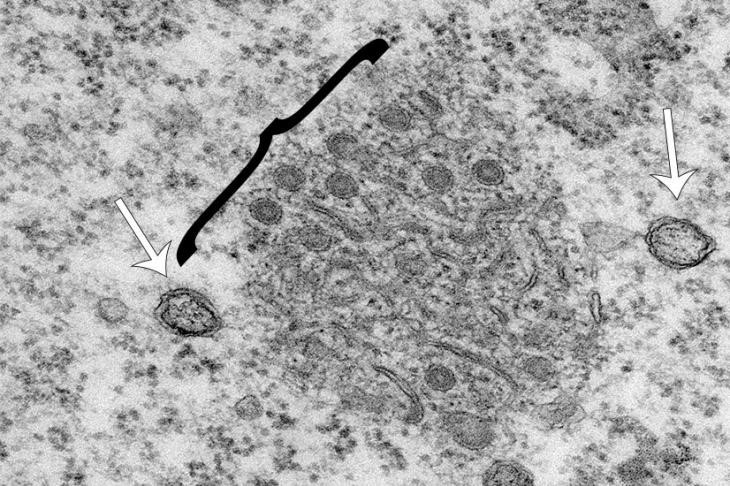Evidence suggests there may be specific interactions consistent across coronaviruses that could be targeted for vaccines and antivirals, as well as potentially breeding for coronavirus-resistant animals.
December 11, 2019

A recent study carried out at The Pirbright Institute in the U.K. has uncovered the sites within the cell where porcine deltacoronavirus (PDCoV) makes new copies of itself during replication.
Using electron microscopy, Pirbright scientists demonstrated that the virus creates replication organelles that are similar to other coronaviruses, the institute announced.
Establishing that this step in the virus life cycle is consistent across the virus family could facilitate the development of broad-spectrum control methods to tackle the diseases they cause, the researchers said.
Identified in 2012, PDCoV is an emerging deltacoronavirus that infects pigs and causes severe diarrhea and can lead to the death of piglets, Pirbright said. Replication sites created by viruses during infection, known as replication organelles, have been well characterized in the other three genera of the coronavirus family (alpha-, beta- and gammacoronavirus). The Pirbright researchers were exploring the structures formed by PDCoV when replicating, predicting that they would be comparable to the rest of the family, the institute said.
Published in the journal Viruses, the research confirmed that PDCoV hijacks the host cell’s machinery to form two different structures that make up the replication organelle (Image). These structures are highly similar to those created by infectious bronchitis virus (IBV), a gammacoronavirus that causes debilitating disease in chickens, Pirbright said.
“Imaging porcine deltacoronavirus during host cell infection provides an important insight into the replication mechanisms used by this group of viruses,” said Dr. Helena Maier, head of the nidovirus-cell interactions group at Pirbright. “This is particularly important since other deltacoronaviruses cannot be adapted to cell culture, which makes it very challenging to study how they replicate and interact with the host cellular machinery.”
As well as providing information about the deltacoronavirus genera, this study has helped identify common structures formed by coronaviruses when they infect a host cell, Pirbright said.
“This evidence suggests that there may be specific interactions that are consistent across the family that we could target to engineer vaccines and antivirals, as well as informing animal breeding programs for coronavirus resistance,” Maier added.
The research will feed into the group’s broader program of work that aims to understand how the coronavirus family interacts with host cells, Pirbright said. Future research will use sophisticated, high-resolution three-dimensional imaging techniques, such as cryo-electron tomography and cryo-soft X-ray tomography, to view the replication organelles of IBV, which will allow the team to investigate host-virus interactions in greater detail. The planned research will use Diamond Light Source facilities as part of a new collaboration agreed with Pirbright in November 2019.
You May Also Like

.png?width=300&auto=webp&quality=80&disable=upscale)

